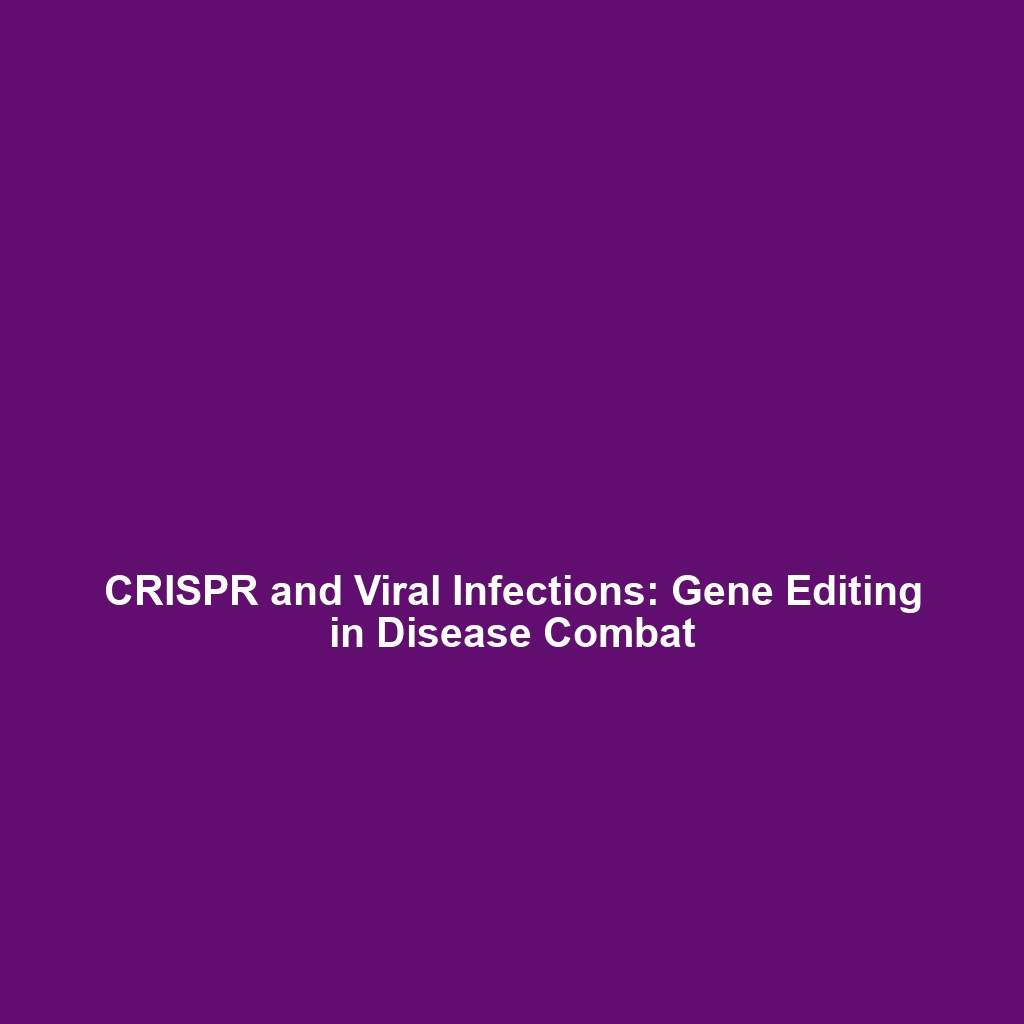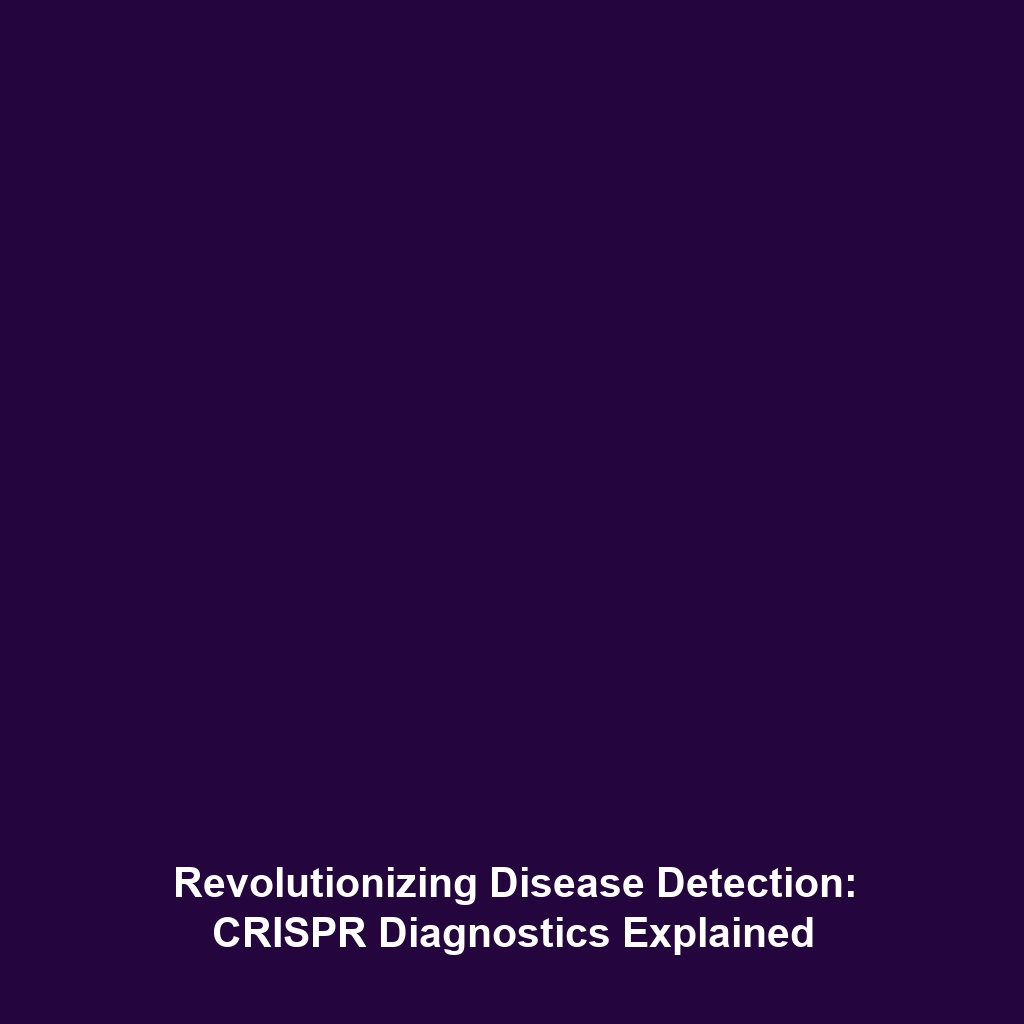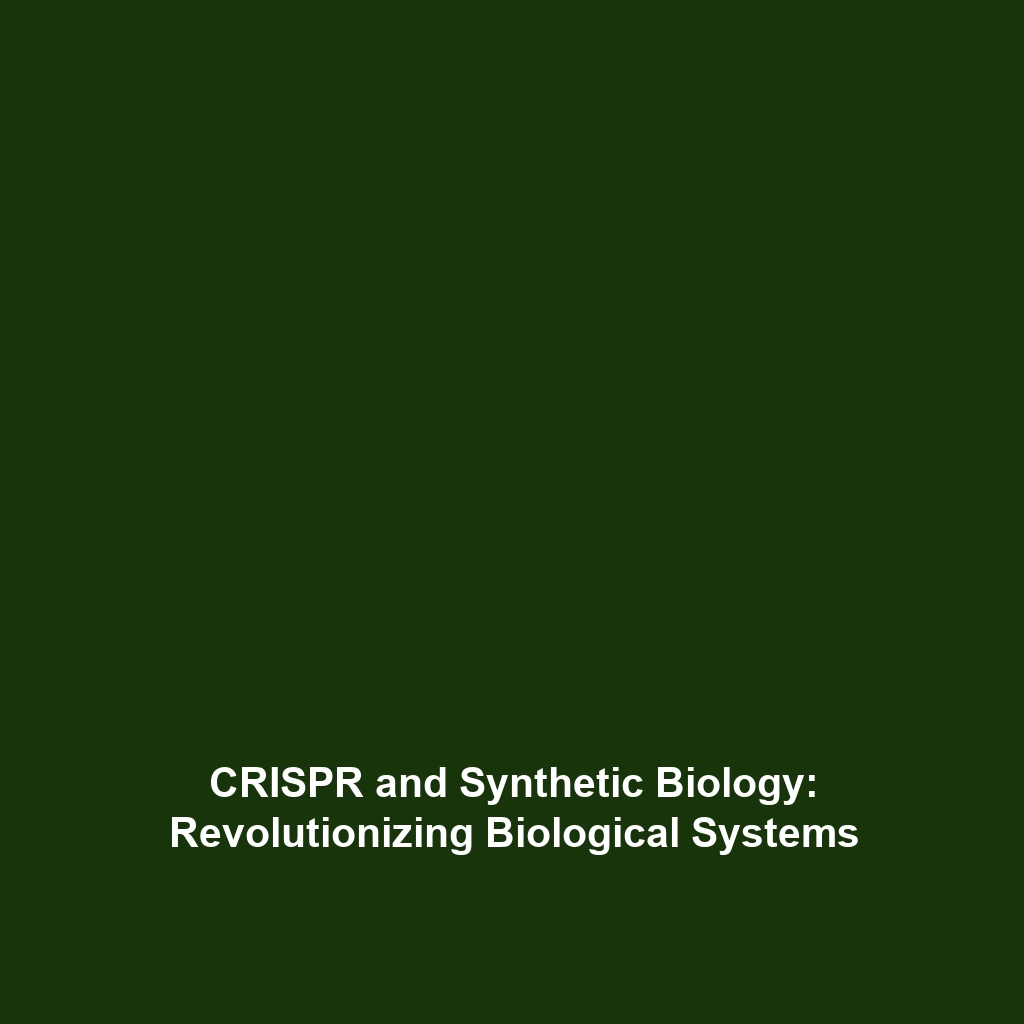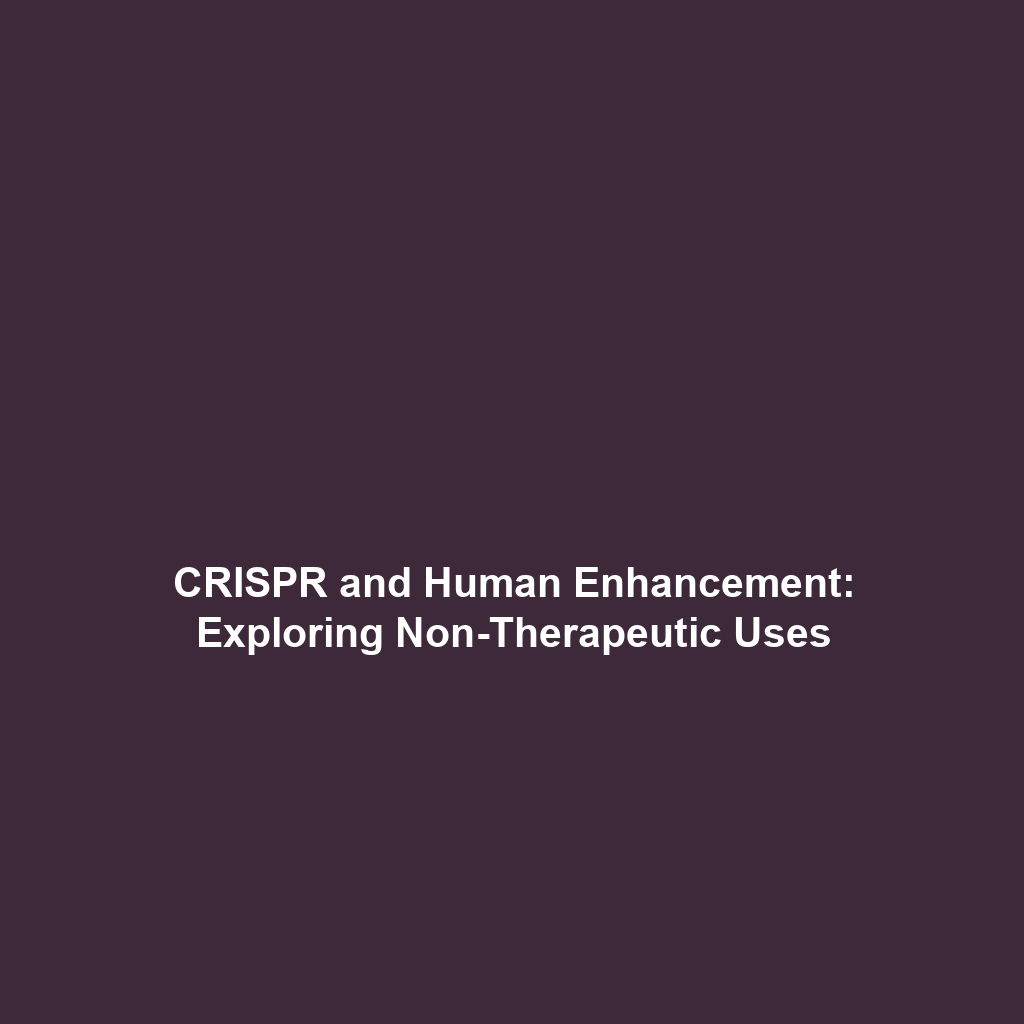CRISPR-Cas13: RNA Editing in the Landscape of CRISPR Gene Editing
Introduction: CRISPR-Cas13 represents a paradigm shift within the CRISPR Gene Editing framework by focusing on RNA editing instead of traditional DNA editing. Unlike earlier CRISPR systems that modify genomic DNA, CRISPR-Cas13 operates by targeting RNA molecules, making it a promising tool for precise regulation of gene expression. This innovative approach holds immense significance in genetic research, therapeutic development, and the potential treatment of various diseases. In this article, we will delve into the key concepts, applications, challenges, and future prospects of CRISPR-Cas13 within the broader context of CRISPR Gene Editing.
Key Concepts of CRISPR-Cas13
CRISPR-Cas13 utilizes a unique mechanism that sets it apart from other CRISPR systems. Here are some fundamental principles:
- RNA Targeting: Unlike Cas9, which cuts DNA, Cas13 specifically recognizes and cleaves RNA targets, allowing for transient modifications.
- Precision and Versatility: CRISPR-Cas13 allows researchers to precisely edit RNA, providing a versatile tool for gene expression studies without altering the genome.
- Applications in Therapeutics: By targeting RNA viruses and regulating gene expression, Cas13 is being explored for its potential to treat numerous diseases more safely than DNA modifications.
Applications and Real-World Uses
The applications of CRISPR-Cas13 are transformative, especially within the field of CRISPR Gene Editing. A few notable uses include:
- Viral Infections: CRISPR-Cas13 has been utilized to target and inhibit RNA viruses, including influenza and coronaviruses, showcasing its potential as a therapeutic agent.
- Gene Regulation: Researchers are leveraging Cas13 for fine-tuning gene expression in therapeutic contexts, potentially leading to advancements in cancer treatment and regenerative medicine.
- Diagnostics: Its ability to selectively bind to RNA makes CRISPR-Cas13 a powerful tool for RNA-based diagnostics, enabling rapid detection of viral infections.
Current Challenges of CRISPR-Cas13
Despite its potential, CRISPR-Cas13 faces several challenges:
- Delivery Mechanisms: Developing effective delivery systems that ensure Cas13 reaches the target tissues remains a significant hurdle.
- Off-Target Effects: While better than DNA editing techniques, Cas13 is still susceptible to unintended RNA edits, necessitating further research.
- Stability of RNA Targets: RNA molecules are less stable than DNA, complicating the functional longevity of Cas13 applications.
Future Research and Innovations
Ongoing research is poised to unveil exciting innovations within CRISPR-Cas13 technology. Key areas of focus include:
- Next-Gen Delivery Systems: Improving methods for delivering Cas13 to specific tissues or cells could enhance its therapeutic applications.
- Dual-Function Systems: Researchers are exploring systems that can edit both RNA and DNA, expanding the functionality of CRISPR technologies.
- Enhanced Specificity: Future studies aim to increase the specificity of Cas13 to reduce off-target effects, making it a safer option for therapeutic interventions.
Conclusion
CRISPR-Cas13 emerges as a groundbreaking tool within the CRISPR Gene Editing landscape, presenting extensive possibilities for RNA editing. Its applications in combating viral infections, regulating gene expression, and rapid diagnostics underscore its relevance in modern biotechnology. As researchers continue to address current challenges and push the boundaries of innovation, the future of CRISPR-Cas13 holds immense promise for advancing genetic therapies. For further insights on CRISPR technology, explore our other articles on CRISPR advancements and real-world applications of gene editing.







